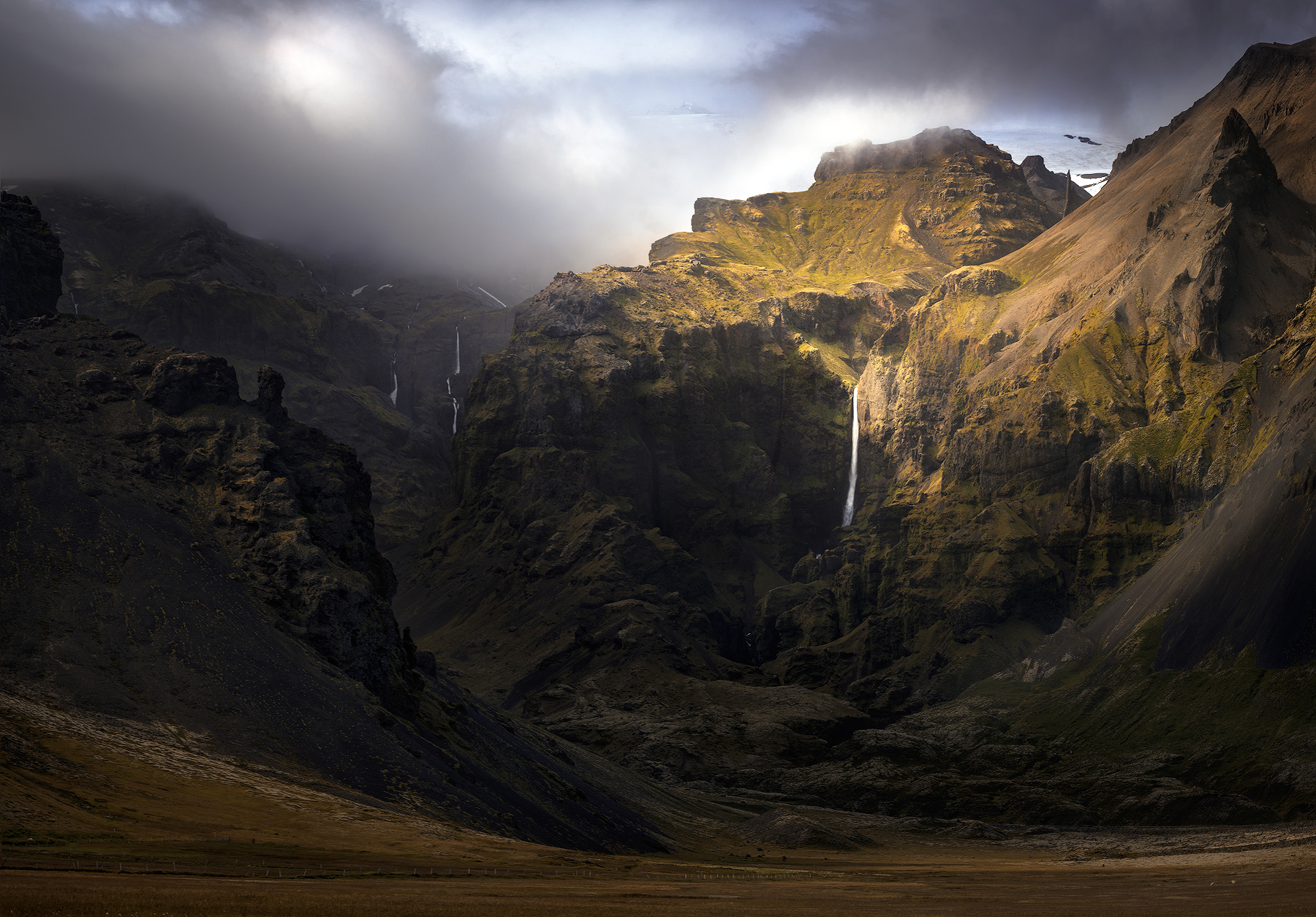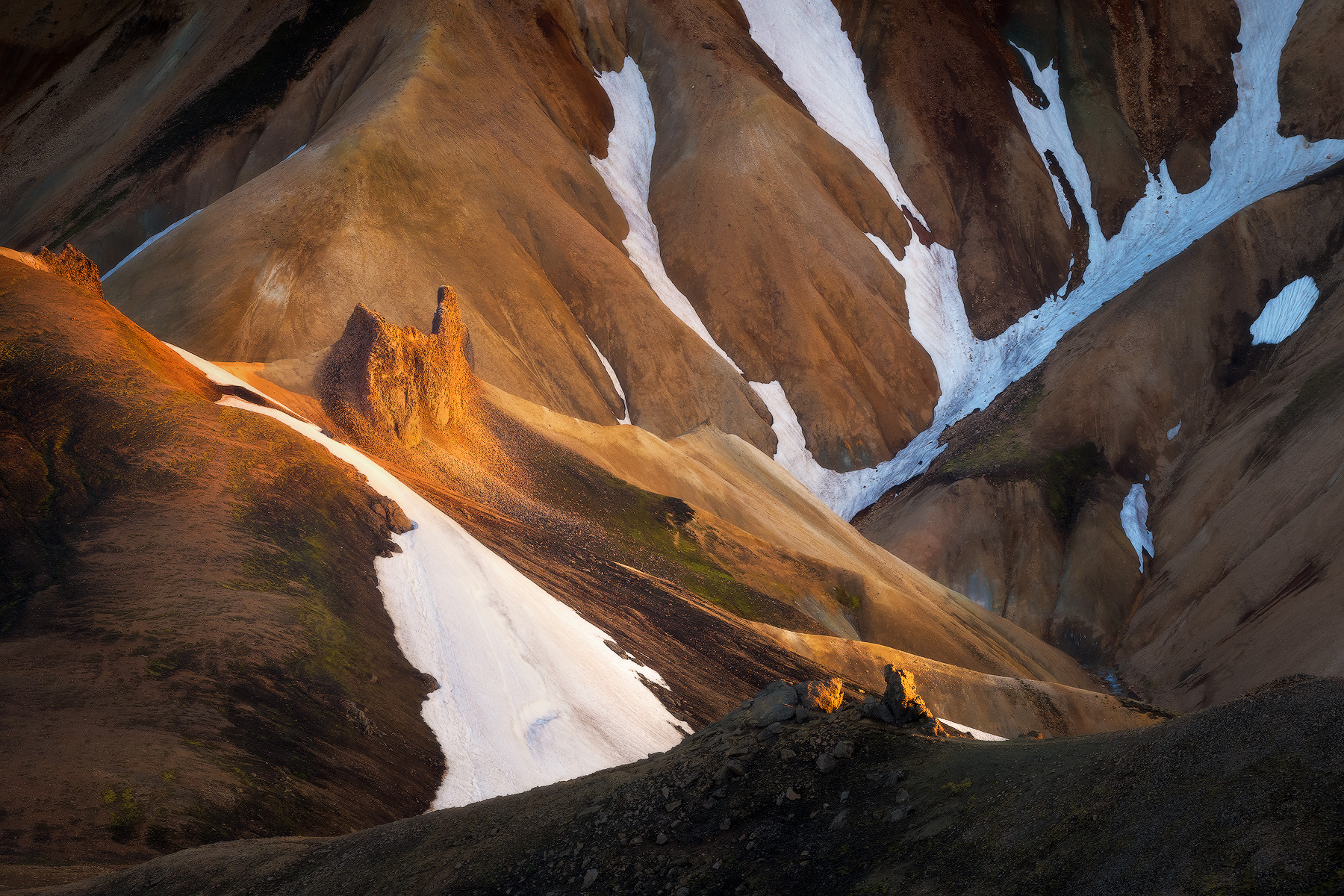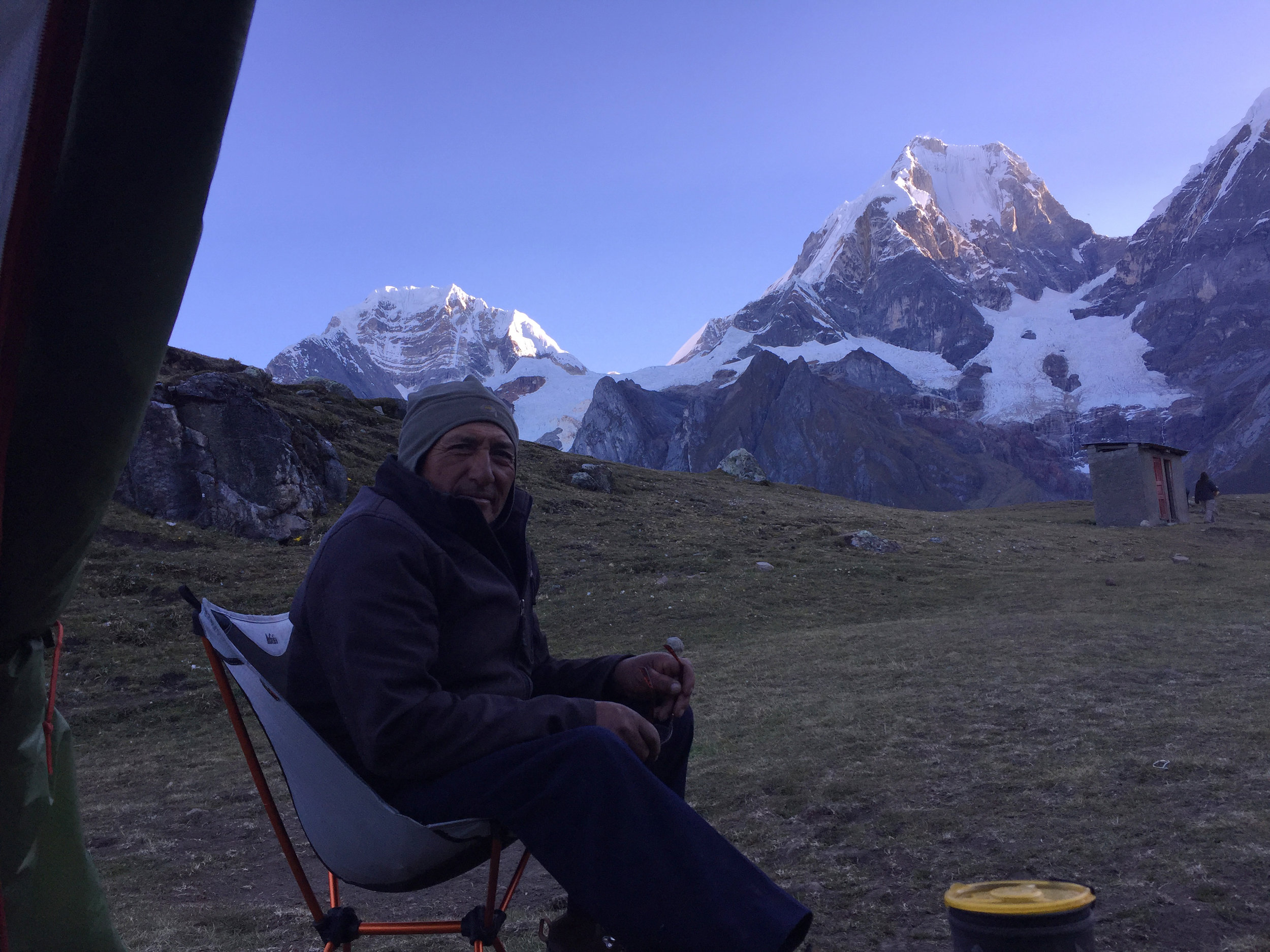Iceland is a small country possessing a large abundance of world class natural beauty. In recent years Iceland has, deservedly, cemented its place among the world’s most sought after photographic destinations. Iceland occupies a spot high on the bucket list of many tripod toting travelers on the world photography circuit . Having said this, however, I can admit to holding some reservations before my own trip to the island country last summer.
Deciding to go to Iceland was unexpected. For the previous three summers my wife, my son, and I explored South America, traveling first to Ecuador, then Colombia, and finally to Peru. I expected this trend to continue. So when my wife proposed spending a few days in Iceland on our way to Spain I jumped at the idea. Why not? Its beauty is legendary and, besides, when else would I be able to put a trip to Iceland together on the fly? Perhaps this would be my only opportunity. There was no way I would pass it up. Our plan for a brief stop eventually morphed into a 17 day odyssey around the island.
I have to admit something. As I prepared for the trip a nagging unease began to creep in. Before most photography trips I tend to have an array of concepts in mind to ferret out once I’m on the ground and start to work my way through the trip. With these ideas swimming around in the back of my head it then becomes an exercise in reacting to weather and light conditions to decide which concept makes the most sense at a particular location for each particular day. For Iceland, though, I was blank. And that was the source of most of the unease I felt. The remainder resulted from the fact I truly don’t enjoy photographing in around groups of other people and, from all that’s reported, Iceland is insanely crowded in the summer. Large groups throw me off, creating a mental barrier between myself and the nature I’m trying to connect with in order to produce a meaningful photograph. So, the way I decided to deal with this unease was to approach Iceland with an entirely different mindset. Instead of fixating on positioning myself to be in the right spot at the right time to get the “best”shot, I’d just allow the trip to progress at its own natural pace, only photographing what moved me as we moved throughout the country as regular travelers would. It was a throwback to a style of photography I engaged in during film days while I was traveling around the world for 16 months. If I stumbled across a subject which was interesting or beautiful, I photographed it. If I didn’t, the camera stayed in the pack. This allowed my mind to focus on traveling for the sheer joy of traveling, especially since I was with my family and some non-photography friends. I continued to keep an eye on the sky and weather, but I usually didn't go out photographing unless I was particularly moved to do so. In the end I feel this style worked out well, even if I know I passed on some potentially strong photographic moments.
Below are images from the trip accompanied by some insights into the making of each image.
Falling Light
Nikon D850 Nikon 70-200 f/4 @102mm, f/11, 1/125, ISO200
When I first drove past this waterfall in the south of Iceland it seemed unimaginable that I’d never seen an image of it before. It was that jaw-droppingly stunning. I was sure images existed, but it was not a frequently photographed scene. I drove past it three more times over the next two weeks and grew all the more confident there was a great image to be made under the right conditions. On the last pass amazing afternoon light flooded across the upper half of the waterfall. I quickly made a u-turn as my pulse quickened knowing it wouldn’t last long. Two minutes later I had my long lens out and hand held a variety of compositions which aimed to balance the falls against the direction of the light. At the bottom the wide sweep of the valley helped round things out. The light soon faded and the scene lost its energy.
Light on the Path
Nikon D850 Nikon 70-200 f/4 @200mm, f/16, 1/125, ISO400
This particular image remains special to me. Hours before creating it I had no idea it was out there, it was beyond any preconceived concept for any potential images I could create that day. In this regard it is a prime example of what I refer to as “discovered photography” -- images which are borne from staying open to the moment, allowing yourself to react to what’s given, and capturing images which, under a different mindset, could easily have been passed over.
When I originally posted this image online I went a bit deeper into my own personal philosophy when it comes to being a photographer who deeply values the vital role experience plays in our unique art form. Below is an excerpt from the original post:
“This is perhaps my favorite image from the trip -- a brief moment of light coursing through a barren landscape in the northern part of the country. By the time I pulled over there was barely a moment left to press the shutter and capture this image before the sun dipped below a saddle in a ridge, snuffing the light out in an instant. It was painful. I wanted it to continue. There were more images out there -- good ones. I’m normally more fatalistic when it comes to good light-- when it comes I’m appreciative, when it leaves I’m thankful for having had the experience knowing full well any internal desires I hold do little to combat the inexorable rotation of the earth or the ill-timed intrusion of wind driven clouds. Nature is nature, personal desires are meaningless. We as photographers are, more than anything, witnesses. We create art out of our experiences, translating them for our viewers in ways which provide a glimpse into the transcendent beauty and transformative power of the natural world. I hold little desire to wade into online battles regarding what differentiates photography from other art forms. It’s a conversation better reserved over a pint of beer or while sitting around a campfire. But for me one thing is undeniable: the power of photography resides in its relationship to experience.”
Highland Glow
Nikon D850 Nikon 70-200 f/4 @170mm, f/11, 1/60, ISO800
Visiting the interior was a top priority for the trip. We opted against visiting Thorsmurk because of a bad weather forecast. So instead we went to Landmannalaugar, a high volcanic region with incredibly unique scenery. Luckily a break in the weather promised solid afternoon light. I hiked to the top of a nearby hill to see what I could find. As I hiked down the backside I noticed this double-horned rock outcrop with some great diagonal, forking lines of snow adjacent to it. The light was flat, but I added this scene to the growing list of compositional possibilities which could hold potential with the addition of good light. It’s something I do whenever I shoot — keep a running tab on details both large and small in case conditions/ light change enough to warrant photographing them. A couple hours later I watched as golden light swept towards the outcrop. I hiked/ ran back up to this perspective as sweet directional, yet veiled light struck the left descending diagonal in the composition. Couldn’t have asked for a more perfect moment.
Kirkjubling
Nikon D850 14-24 f/2.8 @24mm, f/11, 1.3 seconds, ISO64
Although I really enjoyed visiting and experiencing Iceland’s iconic photography locations. I wasn’t particularly moved to photograph many of them, mainly because I had really crap luck with light, but also because I’ve trended toward photographing more anonymous subjects over the past few years. One of our favorite towns to camp in was Grundarfjörður, a short drive away from perhaps Iceland’s most iconic mountain: Kirkjufell. As awe inspiring as it was to walk near and marvel up at Kirkjufell I initially wasn’t particularly interested in creating yet another image to add to the tens of thousands which already exist. Then again, if special conditions were offered up, I would be much more willing to the explore the process of finding my own version of the place. As we played soccer at a local field I watched as a perfect weather setup (interesting clouds over head with a clear skies gap on the horizon) unfolded over the area, dramatically increasing the odds for an explosive sunset. There was no way I could pass on those conditions. Near the waterfalls (featured in a high percentage of Kirkjufell images) were several creeks cascading down from high, steep, green hills. I chose one which held the most promise and wandered up alongside it until I found this sinuous, spillover which cascaded toward Kirkjufell. Compositionally I focused on using the creek as a diagonal entry into the bottom right corner of the frame before it wound away into the distance, drawing the viewer’s eye through the frame right toward Kirkjufell itself. The other important consideration was to ensure the mountain was proportionate within the frame in relation to the creek. This is a common mistake when shooting at ultra-wide angles. I settled on a focal length of 24mm, which seemed to work best to maintain this balance. It would be tempting to go much wider to fit in even more the colorful sky or use the creek in even a more dynamic way, BUT, at such a wide focal length, Kirkjufell would appear small, greatly diminishing its impressive size, symmetry, and power within the composition. Once I settled on my composition I just stood back and watched as changing light and clouds blew across the sky, exposing an image every once in a while to capture the variation in experience. Before long the color turned on and I exposed the image you see here. I packed my bag and slowly walked back down, appreciating and savoring the experience I was given.
Shiva’s Fury
Nikon D850, Nikon 24-120 f/4 @100mm, f/16, 1.3sec, ISO320
I was unprepared for the sheer power and fury of Dettifoss. It is a bone shaking place to experience. Located in northern Iceland, Dettifoss is Europe’s most powerful waterfall. In person it more than lived up to its billing. After taking a few standard wide angle images capturing the entire falls, my eye was drawn to the juxtaposition between the fierce crashing water and this stoic section of canyon wall. It held a story of resistance, of a battle between the destructive forces exerted by tons of raging water and the canyon walls which it cuts and creates.
Outer Ring
Nikon D850 14-24 f/2.8 @24mm, f/11, 0.3 secs, ISO64
I stayed up all night shooting only one of the sixteen nights I spent in Iceland, and this was one of the last images I took that night (morning). I like the image enough, mainly due to the fact it was the first nice sunrise (or sunset) I experienced after nine days on the road. Weather was gloomy this past summer. Meteorologists in Iceland declared it the wettest summer in over a hundred years. A few years back this lack of “nice” skys may have been a source of frustration, but as I’ve gravitated away from chasing big colorful skies, it wasn’t such a big deal nowadays. I always try to stay open to what’s presented, allowed my mind and creativity to react through each moment of a shoot from start to finish.
Medial Sweep
Nikon D850, Nikon 70-200 f/4 @100mm155mm, f/16, 1/250, ISO200
One of the most impressive hikes we went on in Iceland was alongside this massive glacier descending from the Vatnajökull icecap, a massive continental icecap located in the southern part of the island. Weather, an ever present partner on the trip, obscured many of the high peaks for much of the hike. Every once in a while though the clouds would break, revealing these stunning moraines sweeping down the glacier. Compositionally I wanted to take advantage of these natural lines to draw the eye down right to left then back right again. It’s tight but it works well enough. As I do for many midday mountain images, I decided to deemphasis the colors, allowing tones, lines, and atmosphere to take center stage.
Haifoss
Nikon D850, Nikon 24-120 f/4 @28mm, ISO 80
The dramatic waterfall of Haifoss was high on my list of falls to photograph during the trip. Being located up a rather rough road on the edge of the Icelandic highlands ensured it wouldn’t be overrun with people. One fact which I truly appreciated about Iceland is, away from the ring road, the nature is raw and open. There are few railings or fences to cordon off the public from nature as nature presents itself. The shooting location for Haifoss is along the edge of a very deep canyon — and there were no ropes or barriers to prevent a visitor from hanging their toes over the precipice. I wouldn’t want it any other way. It’s how experiencing nature is meant to be done. I lucked out with some nice clouds and color on my visit.
Unreleased images:
































